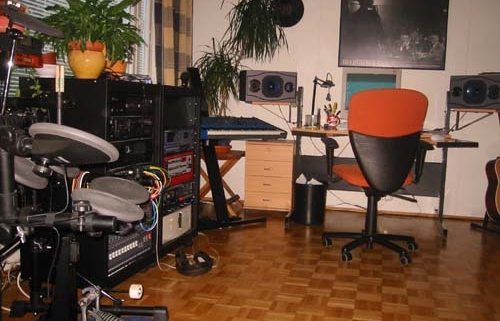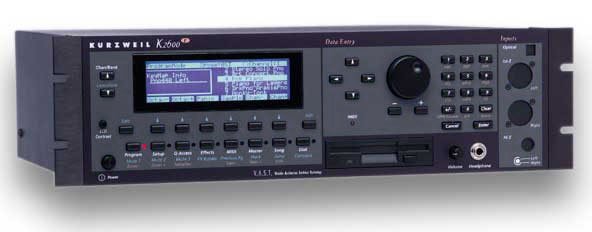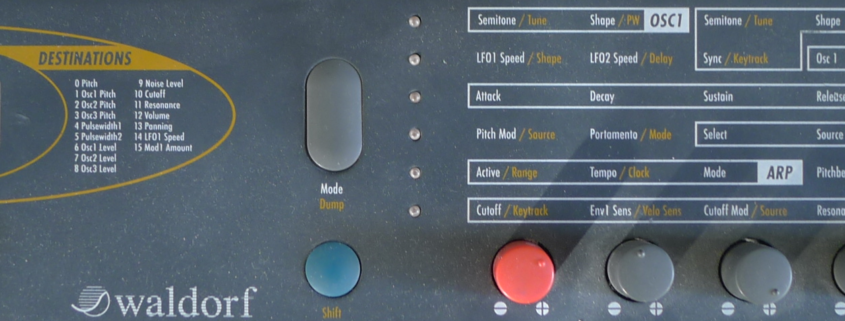This period turned out to be quite heavily gear-oriented.
Come late 2000, and it was again time to move to a larger apartment. The new additional room became dedicated to my home studio. The Jerker setup travelled with me more or less in its original form, and I just planted it in its new environment.
I turned radical and started to sell gear I didn’t use anymore. In the late 2000 and early 2001, I got rid of both the Roland JX-1 (with some hesitation) and the Octapad.
During the spring of 2001 I started to feel some GAS (Gear Acquisition Syndrome) building up. For a long time I considered getting a Waldorf MicroQ to use as a multitimbral VA to complement the Modular, but I ended up getting a Kurzweil K2600R instead. Not the obvious alternative, but it proved to be a decision not to regret. My rack was pretty crammed by now, so I got two 18U racks and put everything from the QuikLok (synths, mixer, Lexicon) as well as the Jerker contents (PC, home stereo equipment) in them. Having absolutely everything in the two racks fixed the Cable Hell problem very nicely, and for the first time in years, everything looked quite tidy. I had no need for the full-sized Jerker anymore, so I dismounted the two topmost levels.
By now, I was definitely hooked on machines. It wasn’t as bad as getting stuff just for the sake of it; I still tried to maintain some reason behind the purchases. Having used the Modular for a few years already, I had developed an interest in real analog machines, and I had had my eyes on a Waldorf Pulse for some time. In early 2002 I finally got one. Another decision not to regret. This machine moves walls.
The Akai had by now been reduced more or less to a hard disk recording device, and since getting the Kurz, I had no need for the Akai as a musical instrument. When it occurred to me that I could connect the Lexicon’s S/PDIF out to the Digital CD in on the SoundBlaster Live and use the Lexicon as a digital HD recording interface, the Akai was left completely without a job. I soon sold the Akai and a bunch of other useless stuff, and got enough money to get an electronic drum set instead. Drumming was something I had always wanted to do. It still is. I learned something about having too little time to use all the gear I had collected.
I was starting to consider getting rid of the Emax (with much hesitation), as I had neither used its sound nor its mixer capabilities, and I felt it was such a waste to use it merely as a controller. My plan was to sell the Emax, by now my only keyboard, and swap the Kurzweil 2600R for the 88-key version, and hopefully be set for life in the keyboard department. Selling the Emax appeared to be easy enough, but nobody was interested in getting rid of their K2600X’s, and getting a new one was out of the question. I started looking into alternative keyboards, and I figured one with actual sounds wouldn’t be a bad investment. I had become interested in a Virus, the King of VA’s, so I started saving money for the keyboard version, and prepared myself emotionally to part from the Emax. Just before I was going to place an order on a kc, I found another dealer who could provide me with the virus c rack version plus the Oberheim OB-12 VA for a total of about 50 euros less than what I was originally going to spend on the kc. So I felt I was literally getting one extra synth for the same price. The only drawback was that Obie only had four octaves, but I considered that only a minor drawback, all things considered. I ordered the two machines and sold my Emax, which I actually regret a bit, which of course is totally irrational.
Having been without something to drum on for a while, I got a real eDrum set, the Yamaha DTXpress. I learned that drumming is as fun as it is hard.



